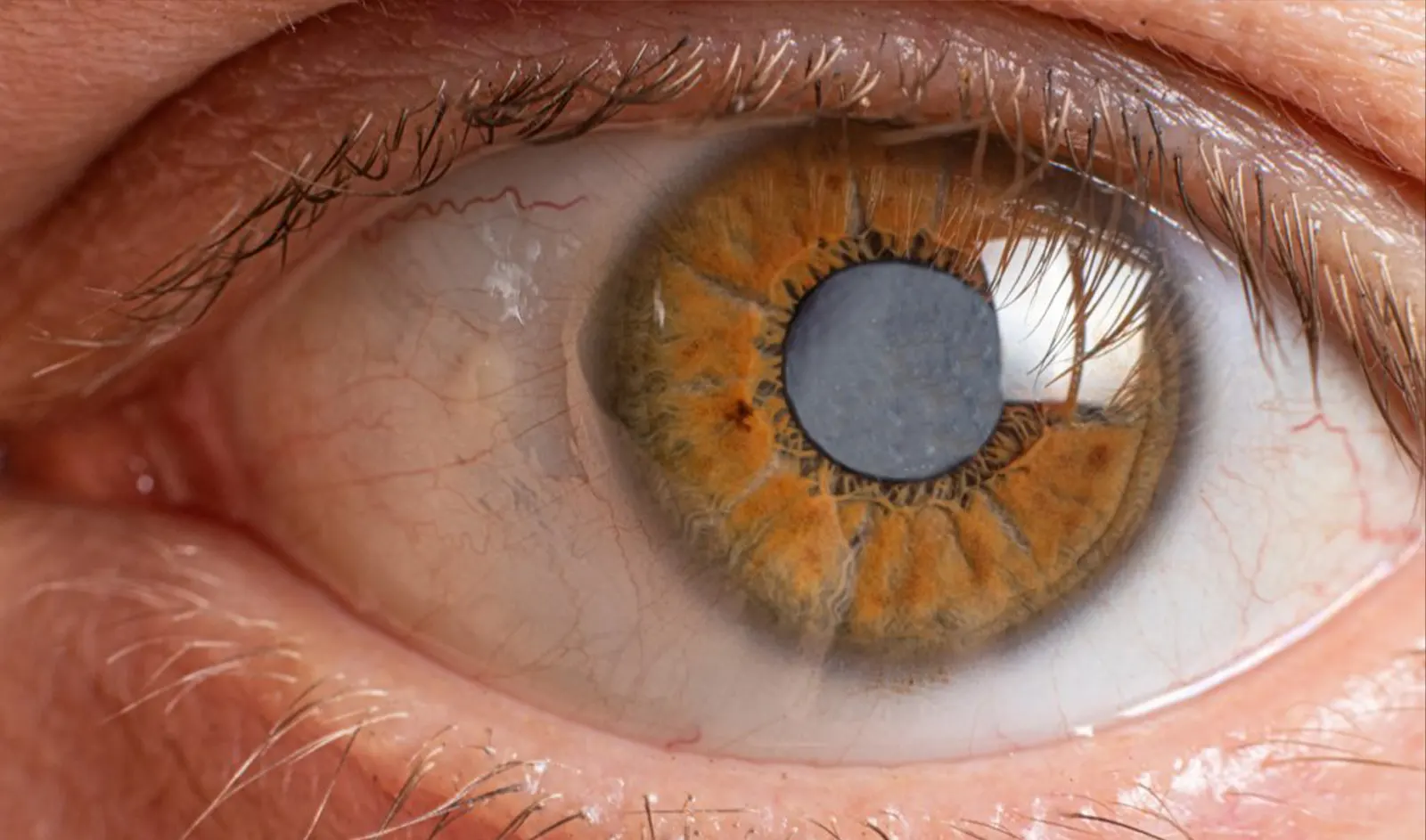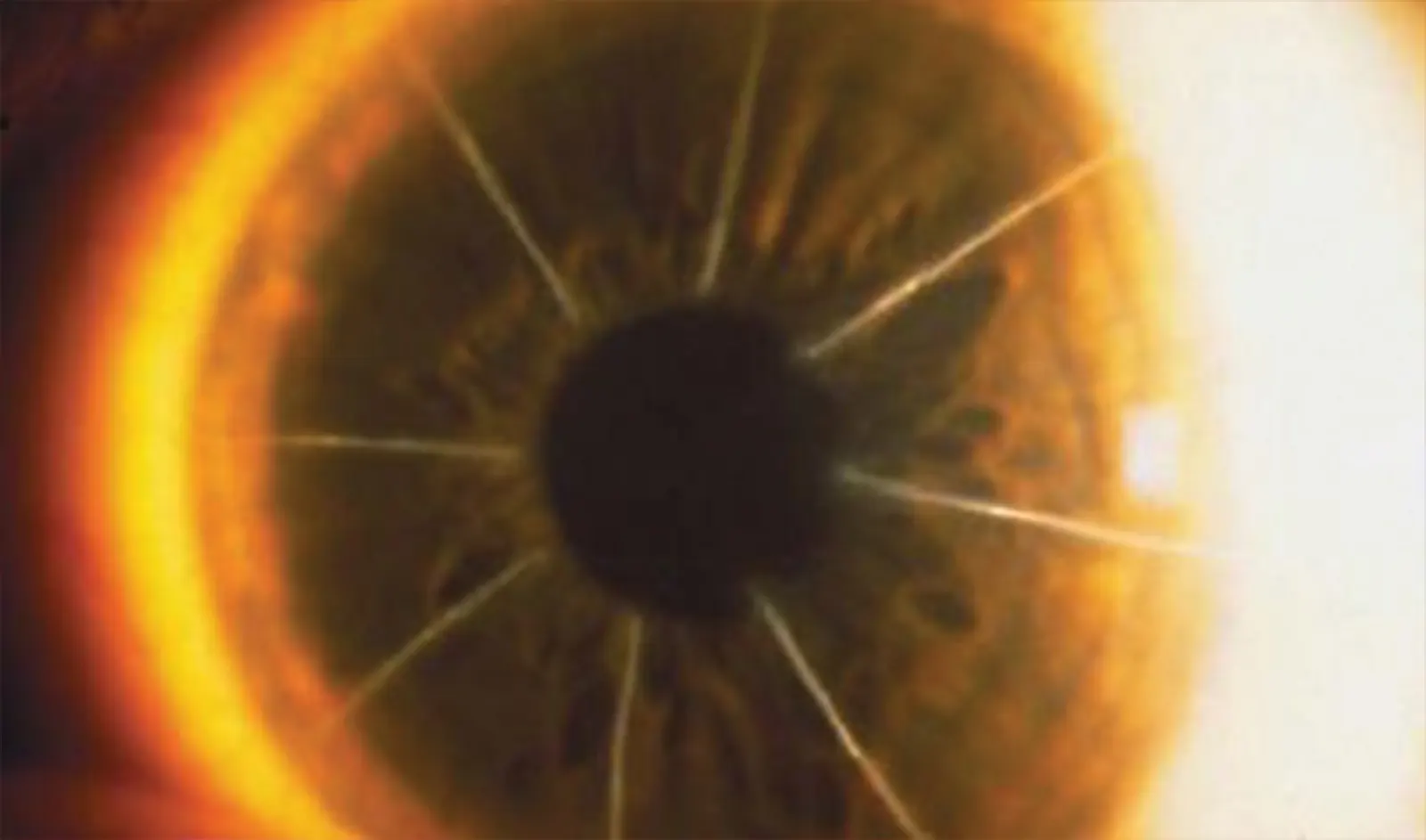A normal cornea is smooth and symmetrical in shape. It easily focuses light entering the eye through its even surface. In contrast, a warped and distorted cornea is irregular in shape. It scatters light with its uneven surface. Let’s learn more about corneal warpage and what you can do to repair it.
When the cornea is warped, it can cause incredible difficulties with vision. And what makes it even more challenging is that even glasses and soft contact lenses don’t help with the symptoms of corneal distortion. Corneal irregularity can be temporary or permanent, depending on the underlying cause.
There are many sources of corneal warpage and distortion.
Rigid gas-permeable contact lens wear can distort the cornea’s shape, but thankfully this effect is temporary. Simply discontinuing contact lens wear will allow the cornea to regain its normal shape. This can take weeks to months, depending on the length of contact lens wear and the severity of corneal warpage. Even soft contact lenses can cause corneal distortion, but it’s generally less severe and resolves more quickly after discontinuing their use.
The more concerning causes of corneal warpage are those that are permanent. Certain diseases such as keratoconus and pellucid marginal degeneration cause progressive thinning and steepening of the cornea. Both conditions result in corneal irregularity, but the pattern is slightly different between the two.
Alternatively, trauma to the cornea could distort its shape. As the cornea attempts to repair itself, scar tissue can form, resulting in contracture and opacification of the cornea. This can further contribute to irregularity.
Corneal surgery may also induce warpage. Laser-Assisted In Situ Keratomileusis (LASIK) decentration, post-LASIK ectasia, and Radial Keratotomy are some examples of surgical causes.

When a cornea is warped or distorted, the light that hits the eye is not focused like it should be. This results in a host of common symptoms, including the following:
These symptoms tend to persist, even with glasses and soft contact lenses. That’s because glasses and soft contact lenses can only correct for regular astigmatism. In corneal warpage, the astigmatism is irregular. While rigid gas-permeable contact lenses are sometimes able to help, not everyone can tolerate wearing them.
When a patient’s cornea distortion is a result of surgery, these symptoms can be especially disconcerting. Patients can be rather disappointed when their vision is worse, instead of better, after their procedure. They may be hesitant to pursue further surgery, although as you’ll read that may well be the best solution.
People with cornea distortion were historically out of luck. Thankfully, this is no longer the case with the advent of laser corneal reconstruction.
Dr. Motwani is one of the few surgeons that perform this innovative procedure. This cornea repair surgery is done with a laser called the WaveLight EX500. This laser is guided by a topographer, a machine that provides a map of the cornea.
Dr. Motwani uses the WaveLight Contoura system to guide the repair of corneal warpage. It is the most powerful corneal topography-guided ablation system in the United States. It maps up to 22,000 unique points in the cornea, to gain an in-depth understanding of its shape.
Although WaveLight Contoura has been used in the rest of the world for many years, it was only approved by the US Food & Drug Administration (FDA) in 2016. This system is indicated for use in corneal repair and treatment of irregularity and warpage. The laser is able to remove the tissue causing the irregularity, smoothing out the cornea and ultimately restoring vision. It can also correct refractive errors such as myopia, hyperopia, and astigmatism, to decrease a patient’s dependency on glasses.
Every cornea has a different shape and is as unique as one’s fingerprint. This procedure is truly personalized to the individual cornea. Dr. Motwani designed the method, called the San Diego protocol. He wanted to share his successful technique with others, so he published it in medical journals. It remains the only published protocol in the United States for repairing corneas with topographic-guided ablation. He continues to be one of the few surgeons performing cornea repair surgery because there is so much intricate knowledge and expertise required to perform this procedure well.
The goal of cornea repair surgery is to correct all imperfections, but sometimes this has to be done in a staged fashion. Initial repair of corneal irregularity can dramatically improve correction and vision, but occasionally a second laser procedure is required to fine-tune the result.
Collagen crosslinking (CXL) is a procedure that lends strength to a weakened cornea. It can be combined with laser corneal reconstruction to prevent further corneal distortion over time. The technique involves the following steps:
CXL is especially useful in weak corneas, like those with keratoconus, pellucid marginal degeneration, or post-LASIK ectasia. Because the cornea is frail in these conditions, it is prone to changing shape. After surgical repair of the cornea, CXL can serve to lock the result in place. The cornea will be cured in its desired shape to avoid shifts post-surgically. There is a minimum corneal thickness requirement of 400 micrometers to undergo CXL safely. A test called pachymetry will be used to screen for this pre-operatively.
Corneal distortion and warpage can interfere with patients’ ability to live life. They may have trouble driving, leading to a loss of independence. They may be at risk for injury due to their diminished sight. They may be dealing with headaches, anxiety, and depression. They may be suffering with the loss of reading ability, loss of ability to pursue interests, and loss of employment prospects. They may feel as though their life has been put on hold.
Why continue to live like this when we have a solution? Dr. Motwani is trained and experienced in cornea repair surgery to finally restore patients’ sight and lives.

Cataract Surgery is the most performed surgical procedure in the United States, and has a phenomenal track record for improving…
Read More
The treatment of trauma with topographic-guided ablation depends on the level of scarring caused by the trauma, the position of…
Read More
In the dynamic world of eye care, keratoconus treatment has become a focal point due to the condition’s impact on…
Read More